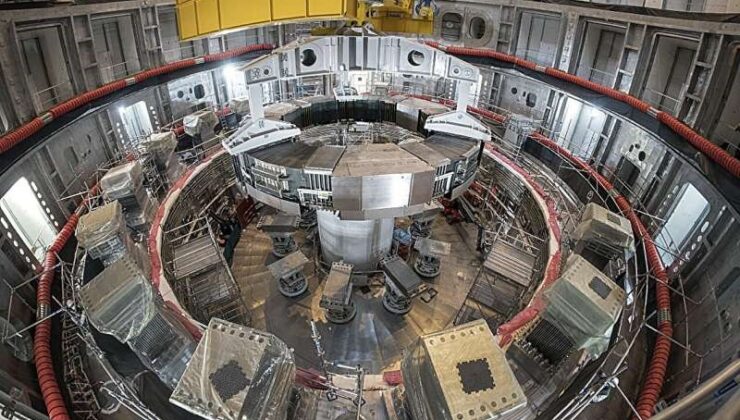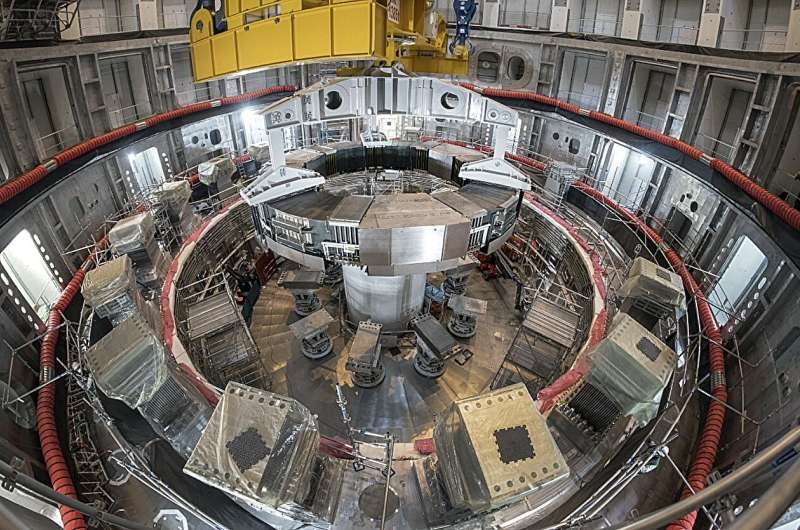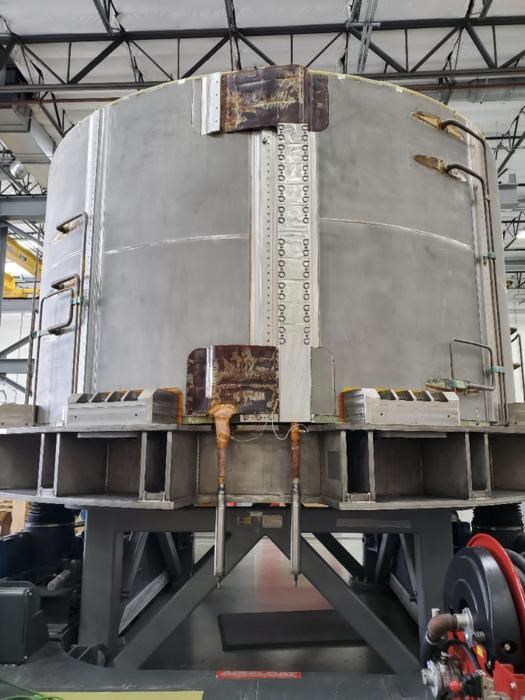

In a remarkable development in fusion energy technology, ITER (International Thermonuclear Experimental Reactor) has completed all components of the world’s most extensive and powerful pulsed superconducting electromagnet system. This intricate magnet assembly, the largest and most potent ever constructed, forms the core of ITER’s ring-shaped fusion reactor, known as the Tokamak.

The final component achieved was the sixth module of the central Solenoid, crafted and tested in the United States. Once fully assembled at ITER’s facility in southern France, this central Solenoid will become the most formidable magnet in the entire system, capable of lifting an aircraft carrier.

When completed, the pulsed magnet system will weigh a staggering 3,000 tons, functioning alongside six annular Poloidal Field (PF) magnets, produced and supplied by Russia, Europe, and China. These superconducting magnets are essential in the fusion process, specifically in initiating and containing a superheated plasma within the Tokamak.
The fusion process initiates with the injection of a small quantity of hydrogen fuel (a mix of deuterium and tritium gas) into ITER’s massive Tokamak chamber. A pulsed magnet system channels an electric current, ionizing the hydrogen gas and creating plasma—a cloud of charged particles. The magnets generate powerful magnetic fields that confine and shape this ionized plasma, preventing it from making contact with the reactor walls.
External heating systems will then elevate the plasma’s temperature to a scorching 150 million degrees Celsius, surpassing the sun’s core temperature by tenfold. At these temperatures, the atomic nuclei within the plasma particles will merge, releasing substantial amounts of heat energy.
Once operational, ITER is projected to generate 500 MW of fusion power from just 50 MW of input heating power, achieving an impressive tenfold energy gain. At this efficiency, the fusion reaction is expected to sustain itself, resulting in what is termed ‘burning plasma’.
By integrating all necessary systems for industrial-scale fusion, ITER functions as an expansive and intricate research hub, offering over 30 member nations the insights and data required to advance commercial fusion power. Presently, seven countries and coalitions are engaged in ITER’s construction: China, Europe, India, Japan, Korea, Russia, and the U.S. Thousands of scientists and engineers are collaborating globally, contributing components from hundreds of factories across three continents to construct a singular, cohesive machine.
In 2024, ITER proudly announced reaching 100% of its construction targets. With the majority of core components delivered, the ITER Tokamak is now undergoing the assembly phase. Notably, in April 2025, the first vacuum vessel sector module was successfully installed in the Tokamak Pit ahead of schedule, marking a significant milestone in the assembly phase. The reactor is anticipated to achieve its first plasma by 2033.
OTOMOBİL
3 gün önceSİGORTA
3 gün önceSİGORTA
3 gün önceSİGORTA
4 gün önceSİGORTA
4 gün önceBİLGİ
5 gün önceBİLGİ
5 gün önceSİGORTA
5 gün önceSİGORTA
6 gün önceSİGORTA
6 gün önce 1
DJI Mini 5: A Leap Forward in Drone Technology
20637 kez okundu
1
DJI Mini 5: A Leap Forward in Drone Technology
20637 kez okundu
 2
xAI’s Grok Chatbot Introduces Memory Feature to Rival ChatGPT and Google Gemini
14595 kez okundu
2
xAI’s Grok Chatbot Introduces Memory Feature to Rival ChatGPT and Google Gemini
14595 kez okundu
 3
7 Essential Foods for Optimal Brain Health
13288 kez okundu
3
7 Essential Foods for Optimal Brain Health
13288 kez okundu
 4
Elon Musk’s Father: “Admiring Putin is Only Natural”
13122 kez okundu
4
Elon Musk’s Father: “Admiring Putin is Only Natural”
13122 kez okundu
 5
Minnesota’s Proposed Lifeline Auto Insurance Program
11026 kez okundu
5
Minnesota’s Proposed Lifeline Auto Insurance Program
11026 kez okundu
Sigorta Güncel Sigorta Şikayet Güvence Haber Hasar Onarım Insurance News Ajans Sigorta Sigorta Kampanya Sigorta Ajansı Sigorta Sondakika Insurance News